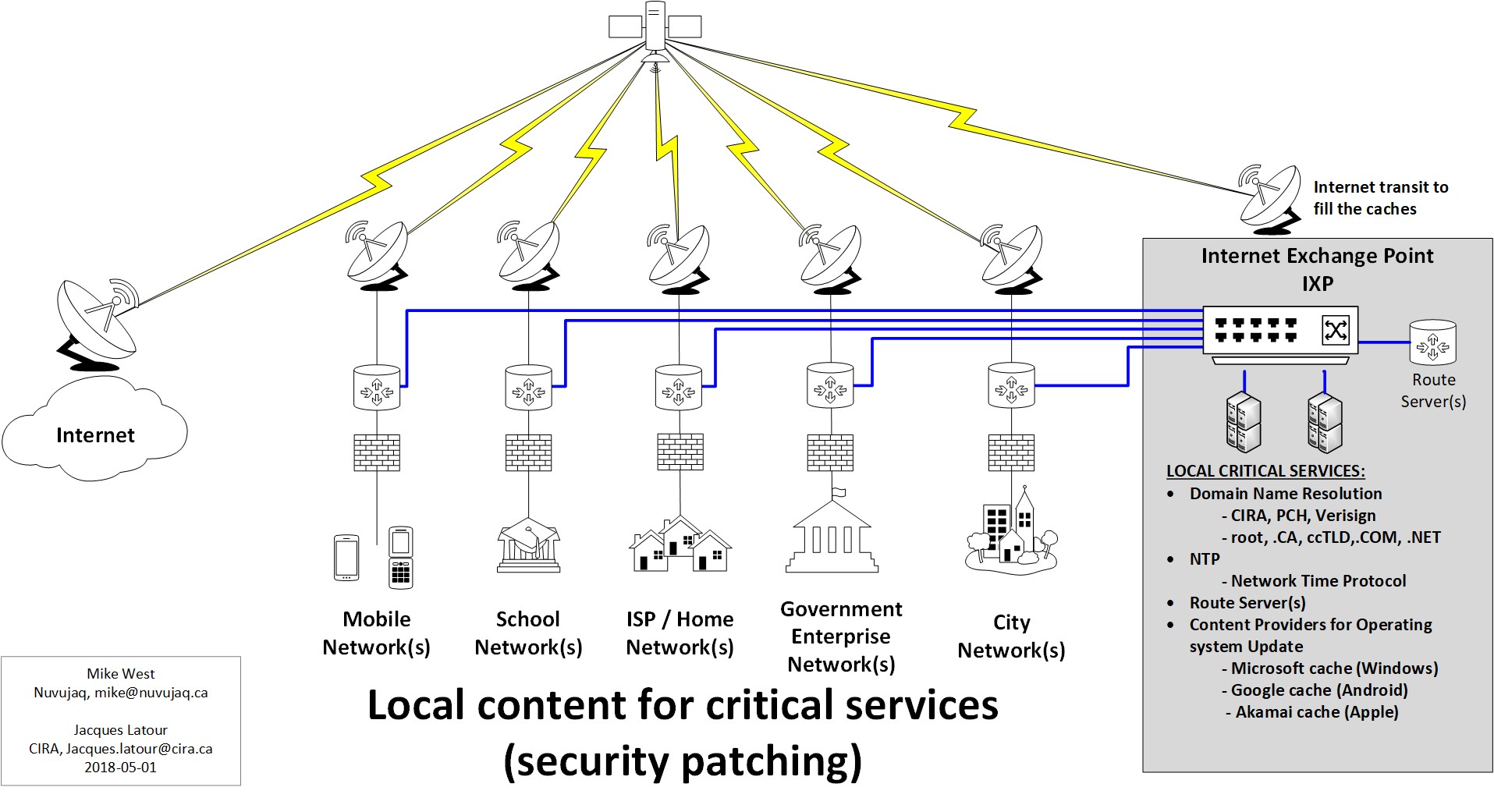An IXP in the Arctic could be life changing for people living in remote or isolated communities. And if the goal is a better online Canada – which should be the ultimate goal — that’s definitely worth it.
We go online for many reasons – to work, for fun, to learn or to access services. Let’s take the example of going online to renew your license, your provincial health card or other government ID. Whether you renew online directly or visit a website to learn how to renew, it’s quick and easy – you’re in and out. Unfortunately, it’s not quite so quick and easy in northern Canada.
If you’re in Iqaluit, for example, you open your browser, type in the web address and then you wait. Finally, the website is found and begins to load. So you wait some more. In fact, every element on that website – ads, content, pictures, videos – each take over a second to load individually. The more you wait, the more it costs. And this is just one website. Imagine that happening repeatedly. Or what if you have to download something large like a security update to your software; that’s a lot of time and money.
But I think there is a solution – a Canadian internet exchange point (IXP).
Why the wait?
Before I jump into solutions, I want to provide more context. Why does the internet function in this way in northern Canada? It’s because there is no internet in the Arctic. There are users of the internet, but no infrastructure. The internet is a network of networks – and there is no local network in some northern communities. Local ISPs and mobile providers are not connected to one another and communities connect to the digital world via satellite.
If one person is sending an email – even one destined for a next door neighbour – it first goes to their internet service provider (ISP) or mobile provider, then up to a satellite, then back down, then routed elsewhere (often through the U.S.), then back up to the satellite, then to their neighbour’s ISP, then to their neighbours computer. That’s a complicated trip.
It’s slow. It’s lengthy. It’s costly. A solution is needed.
Bringing the internet to northern Canada
An internet exchange point (IXP) is a hub, where independent networks like local content and service providers can connect directly to one another. An IXP is a great opportunity to bring a piece of the internet to the Arctic, in places that currently only have a slow, expensive and cumbersome option. An IXP provides the connection point for local ISPs, mobile providers and content providers to exchange traffic locally. This doesn’t mean traffic will never head up to the satellite, and it’s probably not going to unclog the satellite links – you need satellite links to reach the full internet – but when content is local, the trip is local and it stays local. This is a good thing.
There are so many benefits to a local internet including speed, quality and cost. One of the biggest benefits, from my perspective, is security. Many people living in these communities do not regularly update their software and devices the way someone in Ottawa or Vancouver might. It’s costly and takes too long, so they make the choice to skip an update and wait for the next – or maybe they choose to skip it months on end. This puts them at extreme risk for bad actors wishing to do them harm online. To give you a sense of the risk – Microsoft provides security and software patches every Wednesday. That’s 52 a year versus the one update someone with slow and cumbersome internet might choose to do annually. An IXP can provide part of the solution.
“We all know internet is essential. And yet northern Canadians live without stable, fast and affordable internet, and as a result everything suffers – from government being able to deliver public programs and services, from health care, education, justice, economic development and security,” says Madeleine Redfern, the mayor of Iqaluit. There is a significant digital divide between northerners and other Canadians and this growing inequity contributes to real harms and loss of valuable contributions that the North can make to our national economy and security. Canada has the opportunity and ability to turn this around by providing strategic investments including for telecommunications that would see immediate results and benefits for northerners and Canadians.”
How would an IXP work up north?
There would be definite differences between an IXP in Iqaluit, for example, compared to one in Winnipeg or Montreal. Traditionally, an IXP connects autonomous networks. An autonomous network can be compared to regional roads where all Ontario highways are connected to each other. Through an “IXP”, it would be like connecting those Ontario roads with highways in Manitoba and Quebec. An IXP in the North wouldn’t work that way. It would be more like connecting some Ontario highways to each other.
But connecting local networks is imperative. Going back to the security concern I flagged, if the networks were connected and the IXP had local content caches for Microsoft, Apple and Android, this would mean a software or security update would require one satellite jump to update the local cache, which everyone could then access directly. No more long trips up, down, up and down again for each and every person needing that update, often at the same time.
The biggest challenge an IXP would face in the North is the cost. Those who peer (connect) at an IXP in Toronto or Saskatoon pay port fees, but in the case of the North, given the cost of the jump up to a satellite and back down, it would need to somehow be part of a community service offering.


Many challenges, but worth it
I have many ideas and many questions. How can an IXP work in northern Canada? How would we connect the satellite uplink? Is it best to do it all with IPV6 to avoid IPV4 routing problems?
An IXP in the Arctic could be life changing for people living in remote or isolated communities. And if the goal is a better online Canada – which should be the ultimate goal — that’s definitely worth it.
What do you think? Let us know!
As an expert in developing innovative, leading-edge IT solutions, Jacques has established CIRA as a global leader among ccTLD registries. He has 25+ years of experience in the private and not-for-profit sectors and as CIRA’s CTO,is currently leading CIRA Labs, CIRA’s innovation hub and providing leadership and direction for the management and security of the .CA registry and its underlying DNS.
A visionary in the Internet community, Jacques led the development of CIRA’s Internet Performance Test, is an outspoken advocate for the adoption of IPv6 and represents the .CA registry internationally as a member of a variety of working groups and advisory groups. He is committed to the development of a new Canadian Internet architecture. He has served as the catalyst for the creation of a national Canadian IXP association, CA-IX, and is a member of the Manitoba Internet Exchange’s (MBIX) and the DNS-OARC Board of Directors. Jacques is also a member of ICANN’s Security and Stability Advisory Committee (SSAC).
Jacques holds an Electronics Engineering Technologist diploma from Algonquin College, is ITIL v3 Foundation certified and is a certified Agile ScrumMaster.





